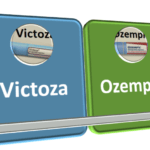As an “Immediate-Release-Publication,” the FDA on 24th February 2022 approved “Empagliflozin in Heart Failure with a Preserved Ejection Fraction” [Ref].
The approval was given to Jardiance after the results of the breakthrough study (the Emperor Preserved Trial) that evaluated the efficacy of Jardiance in about 6000 individuals with heart failure and preserved ejection fraction [Ref]
Participants were divided into two groups. One group of participants comprised of 2997 individuals who received Jardiance in a dose of 10 mg once daily.
The other group consisted of 2991 participants who received a placebo. In addition, all participants received standard therapy.
The primary outcome was:
- Death from a cardiovascular cause
- Hospitalization due to heart failure

At the end of two years of the trial period, 13.8% of the participants met the primary outcomes (died due to cardiovascular cause or needed hospitalization) in the Jardiance group while 17.1% of the participants met the primary outcomes in the placebo group (hazard ratio, 0.79; 95% confidence interval [CI], 0.69 to 0.90; P<0.001).
The primary outcome was driven primarily by an improvement in the number of patients who needed hospitalization due to heart failure.
407 participants treated with empagliflozin and 541 with placebo required hospitalization due to heart failure (hazard ratio, 0.73; 95% CI, 0.61 to 0.88; P<0.001) [Ref].
The efficacy of Jardiance was seen in patients with or without diabetes.
The most common side effects were related to the urogenital infection. UTI was the most common side effect of Jardiance.
| You may also like to read: |
What is Heart Failure with Preserved Ejection Fraction (HFpEF)?
Heart failure with preserved ejection fraction (HFpEF) is a very common medical condition. Heart failure with a preserved ejection fraction is also called “Diastolic Heart Failure”.
The ejection fraction is the percentage of blood that is pumped by the heart.
Example: 100 ml of blood fills the heart at the end of diastole. 60 ml of the blood is pumped out by the heart. Thus, the ejection fraction is 60% (60/100 x 100).
Until recently, most of the medications that are being used to treat heart failure focus on either improving the EF by:
- Reducing the preload (the volume of blood coming to the heart)
- Increasing the contractility of the heart (to pump more blood)
- Reducing the afterload (vascular dilation to make it easy for the heart to pump blood against little resistance)
In patients with heart failure and a preserved ejection fraction, the heart can pump blood adequately, however, the heart is stiff and can not accommodate blood.
For example, 80 ml of blood comes to the heart, and 60% is ejected. 60% of 80 ml means only 48 ml of blood can be pumped out of the heart.
So, although the EF is 60%, the volume of blood that is pumped is just 48 ml.
An ejection fraction of 55% or more is considered a normal ejection fraction.
In clinical scenarios, an EF of less than 40% is considered heart failure with reduced ejection fraction. An EF of more than 40% is considered preserved EF.
| You may also like to read: |
In Conclusion:
Jardiance (Empagliflozin) in a dose of 10 mg has been proven effective in the treatment of patients with heart failure and preserved ejection fraction.
Jardiance, along with ARNI (Sacubitril/Valsartan) and Drugs that act on the Renin-Angiotensin-Aldosterone pathway, is a novel treatment approach in diastolic heart failure, also called heart failure with preserved ejection fraction.



